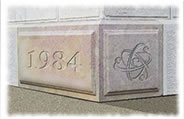Invisible Made Visible
“Culture is the ‘invisible infrastructure’ that shapes people’s approach to work, family and community.”
—The Fusion Group
If Culture is an “invisible infrastructure,” does it have physical manifestations? How do we know it exists? And what is it about culture that makes a difference?
What does it look and feel like? What if we thought about culture as clothing? You’d wear your company’s culture as a suit. Would you be recognizable as an employee? Would it fit as tailor-made in the “team colors” or… ill-fitting, randomly chosen from the back of the closet?
Your “culture” is visible from afar, or should be. Will people know you and your company by how you look and handle yourself in any situation — in the office, on the road, or at a local diner?
How do we spot the Secret Service protecting the president? They’re wearing their culture — dark suits, earpieces, short hair, aviator glasses. When they speak they are courteous and mean what they say. More than just the appearance, there is something about them. Their culture comes from years of tradition and alignment of purpose. It’s perceived as much as the dark suits and glasses.
On a client visit, a group of our colleagues boarded an elevator and keyed in the floor. Moments later, a man entered, glancing at the group. “You guys from Fusion?” he inquired. “Guilty,” they said smiling. “I knew it,” he said. What was it about them? They wore their “Fusion culture” suits. But, more than wearing black, they had a quiet confidence, genuine affinity and willingness to engage. Their culture – and characters – were visible.
You can tell when there’s a culture in place. The people are confident, light, polite, thoughtful and gracious. They’re excited about improving their skills, engaging with their colleagues and serving their clients.
On the flip side, people who work at companies with a default culture tend to be worried about appearances, not as playful, and even gruff. If the boss can’t take his eyes off his iPhone during a meeting, it says something about that person. Being unwilling to make eye contact and engage puts him and his company at a disadvantage.
When culture is firmly in place at the office, it instills confidence in your people, knowing that they have everything they need to be successful. Corporate culture has been thought out and handed down. Someone took time to invest in the company and their “assets” — people that go out in the world wearing their culture not just on their sleeve but as a beautifully tailored suit!
Applications
1. Individually
Are you aware of the significance of your cultural heritage… and the wider culture of community, nation, and society? Take the opportunity to embrace all aspects of culture — art, literature, history, music and (gulp) even politics — that appeal to you. Take an active role in one of them. Some possibilities: community theater, local art league, adult education classes. Your choices are limitless.
2. At Home
Help your children or grandchildren understand what it means to be a member of your family, community, country, and world. Team sports are a great starting point. Take them to a museum. Teach them to respect great achievements of the past, helping them be ready to contribute their own achievements in the future.
3. At Work
Look around. Can you describe or define your culture? Do you have one? Can you describe it to a new employee? To help you, here are five “pillars” of corporate culture: Purpose, Products, Process, Profit and People. Go ahead; give it your best shot. Remember, you are an integral member of the team. Make sure your words and actions reflect your culture.
Make the invisible visible. Wear it well!
Subscribe to our Newsletter


